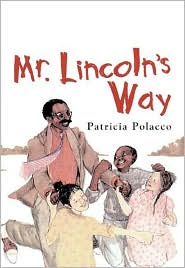Kathleen Krull's Harvesting Hope: The Story of Cesar Chavez

Illustrations by Yuyi Morales
To purchase this text-- http://search.barnesandnoble.com/Harvesting-Hope/Kathleen-Krull/e/9780152014377/?itm=1
Summary: One of Krull's many biographies, this is the story of Cesar Chavez. He came from a ranch in Arizona and loved to spend time with his family. When a drought came in 1937 (during the Great Depression), his family was forced to give up their ranch and move to California to look for employment. His family worked on a farm in hopes of saving money to buy their ranch back, but their dreams quickly faded. After eighth grade, Chavez dropped out of school to work in the fields full-time to help feed his family. Migrant workers were mistreated by the landowners -- sometimes killed for complaining about poor conditions. In his early twenties, Chavez dedicated his life to fighting for a change in the conditions of migrant workers in a nonviolent manner, as inspired by his mother who taught him to use his mind and imagination in dealing with conflict. Chavez taught that truth was a better weapon than violence. He organized a march from Delano to Sacremento to ask for help for
La Causa from the government. When the march reached Sacremento, it was 10,000 people strong. Chavez led the fight to victory and signed the first contract for farm workers in American history. Over the course of this gorgeous picture book, the reader marches with Chavez as he grows up from a shy, little boy in school who gets in trouble for speaking Spanish, to a leader whose voice carried a message of hope in winning a battle for human rights.
Reflection: I bought this book last summer at a book sale for a dollar (
incredible) and was initially drawn to the beautiful illustrations and the focal Latino protagonist, Chavez. This single children's book could be the starting point for several classroom investigations -- American heroes (culminating in a "Live Museum"), a study of immigration/migration - comparing the timeline covered in the book with the more recent Mexican-American relations of 2000s, thematic connections to people and history (courage, family, social power, hope, and prejudice), how the Great Depression affected various groups of people, a scientific study of plant growth and farming technology, the use of music and storytelling throughout social movements (i.e.,
corrido: the carrier of news to places without media access), art integration (portrait, mural of field work), oral history project (interviewing family and friends about their first jobs), and a character/ in-depth study with research of Chavez's life. This book is appropriate for all grades, considering various modifications, that promotes fighting for change with words -- "Si se puede!"
Domains of Social Justice Education:- Self-love and Acceptance: Chavez's strong pride in his roots, cultural upbringing, family
- Respect for Others: Chavez's influence on others in non-coercive ways (similar to Gandhi and MLK as referenced in the Author's Note)
- Exploring Issues of Social Justice: Treatment of field-workers, Human rights (connected to various forms of oppression--classism, racism, languism)
- Social Movements and Social Change: Labor movement - National Farm Workers Association
- Taking Social Action: Emotions of reader (hope, empowerment, inspired) to find their own "la causa" and create a plan (a march, contract, etc.)
If you are interested in viewing the author and an interview about all of her works, check out Krull on YouTube:
http://www.youtube.com/watch?v=Fus1T6r6smc.























